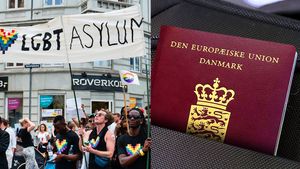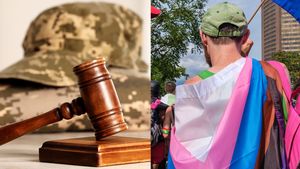Today is National Transgender HIV Testing Day, a day when advocates encourage transgender people to get tested for HIV. Testing is a critical step in reducing HIV in the trans community; only by knowing our status can we protect ourselves and/or get treatment. Appropriate
treatment has proven to be one of the most effective modes of HIV prevention available.
Globally, the rates of HIV among transgender people remain higher than for cisgender people. According to the World Health Organization's 2014 report (a meta-analysis of data from 15 different countries), transgender women were nearly 49 times more likely to have HIV than the general population.
The report pointed to multiple reasons for the high rates, including violence and criminalization, noting "Around the world, transgender people experience physical and sexual violence and hate crimes. The full extent of the violence and hate crimes faced by transgender people is difficult to gauge because it is thought to be underreported. However, an international community-based project to monitor killings of transgender and gender variant people collected 1509 cases of reported killings in 61 countries from 1 January 2008 to 31 March 2014."
Transgender women who were also sex workers were also nine times more likely to have HIV than trans women who were not, making transgender female sex workers the most likely group to have HIV in the world. Unfortunately, poverty, lack of access to appropriate healthcare, violence, and gender discrimination (including job and housing discrimination), all continue to push transwomen (particularly women of color) into sex work.
“We see this repeated all over the world,” JoAnne Keatley, Director of the Center for Excellence for Transgender Health at University of California, San Francisco, told NPR. “Transphobia is alive and well in many societies around the globe. And we see it play out in terms of verbal and physical violence as well as denial of employment or education or familial support, or all kinds of ways in which transgender people are marginalized.”
The Center offers a Transgender HIV Testing Toolkit, reflecting the most current HIV prevention research and best practices for serving trans and gender non-binary people. They hope to encourage and support community-based organizations and prevention programs to host trans-specific HIV testing events, develop trans HIV testing campaigns, and engage trans community members in promoting status awareness.
Although transgender men appear to have lower rates of HIV than transgender women, exact numbers are rarely known: as the Centers for Disease Control and Prevention admits, "One meta-analysis of 29 studies involving transgender people showed that only 5 of them had separate data concerning transgender men."
Earlier this year, a report by Transgender Law Center's Positively Trans program found that of the respondents to a survey of HIV+ trans people 12 percent were men. While few transgender men than women are living with HIV, some reports indicate that they may have worse medical outcomes than thier positive sisters.
In a recent report at a California's Getting to Zero HIV-prevention plan hearing, Dr. Karen Mark, head of the state's
Office of AIDS, showed data indicating that transgender men have the lowest levels of viral suppression among all HIV-positive people in California. This indicates that even when retained in care, transgender men are struggling to lower their viral loads.
Learn more about HIV in the U.S. trans community
here.












































































